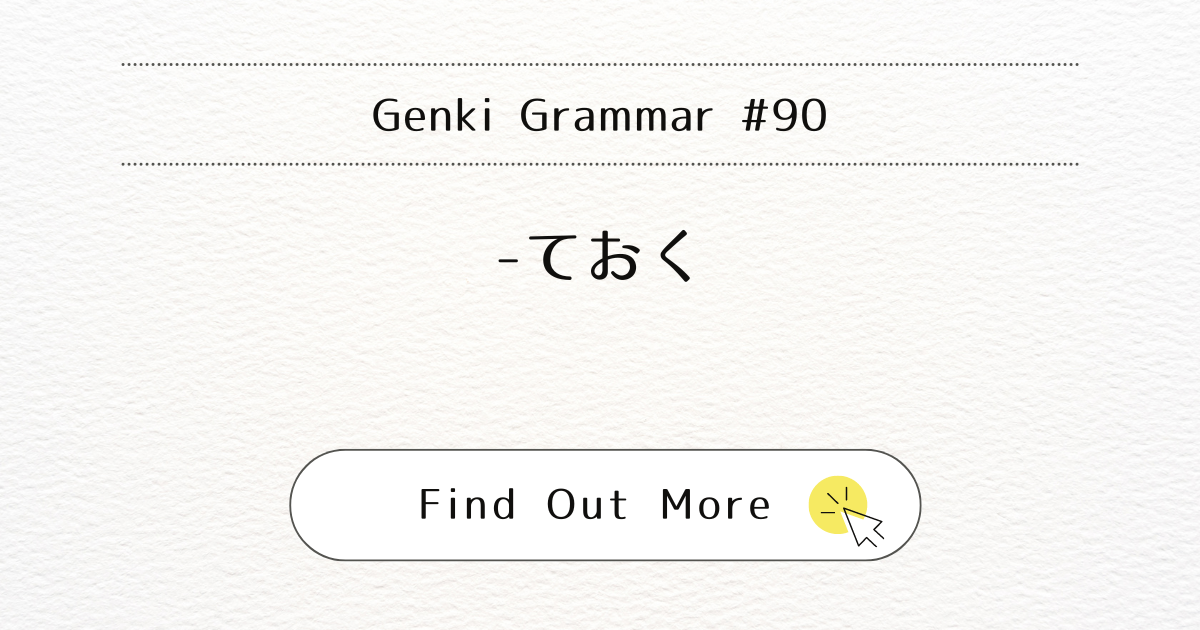
Introduction
In Japanese, the structure ~ておく (-teoku) is used to describe actions done in preparation for something. It’s a useful phrase to know when you want to express that you’re getting ready for a future event. This blog post will explain how to use -teoku in your daily conversations and provide examples to help you understand its usage.
What It Means
The phrase ~ておく (-teoku) combines the te-form of a verb with the helping verb おく (oku). It is used to indicate that an action is performed in advance, usually in preparation for something that will happen later. It’s similar to saying “do something in preparation” or “get something ready” in English.
When You Use It
Use ~ておく when you want to express that you’re doing something now to prepare for a future situation. It’s often used in contexts like preparing for exams, getting ready for guests, or making arrangements for upcoming events.
Examples
Here are some examples of how to use ~ておく in different situations:
- Preparing for an Exam:
- あした日本語の試験があるので、勉強しておきます。
(Ashita nihongo no shiken ga aru node, benkyou shite okimasu.)
Since there will be a Japanese exam tomorrow, I will study for it in advance.
- あした日本語の試験があるので、勉強しておきます。
- Getting Ready for Guests:
- 彼女が来るから、部屋を掃除しておかなきゃいけません。
(Kanojo ga kuru kara, heya o souji shite okanakya ikemasen.)
I have to clean the room because my friend is coming.
- 彼女が来るから、部屋を掃除しておかなきゃいけません。
- Making Arrangements in Advance:
- ホテルを予約しとくよ。
(Hoteru o yoyaku shitoku yo.)
I will make a hotel reservation in advance.
- ホテルを予約しとくよ。
Note
You may notice that in casual speech, ~ておく often gets shortened to ~とく (toku). For example, 予約しておく (yoyaku shite oku) can become 予約しとく (yoyaku shitoku) in more informal conversations.
Conclusion
Mastering ~ておく will allow you to effectively communicate your intentions to prepare for future events in Japanese.



